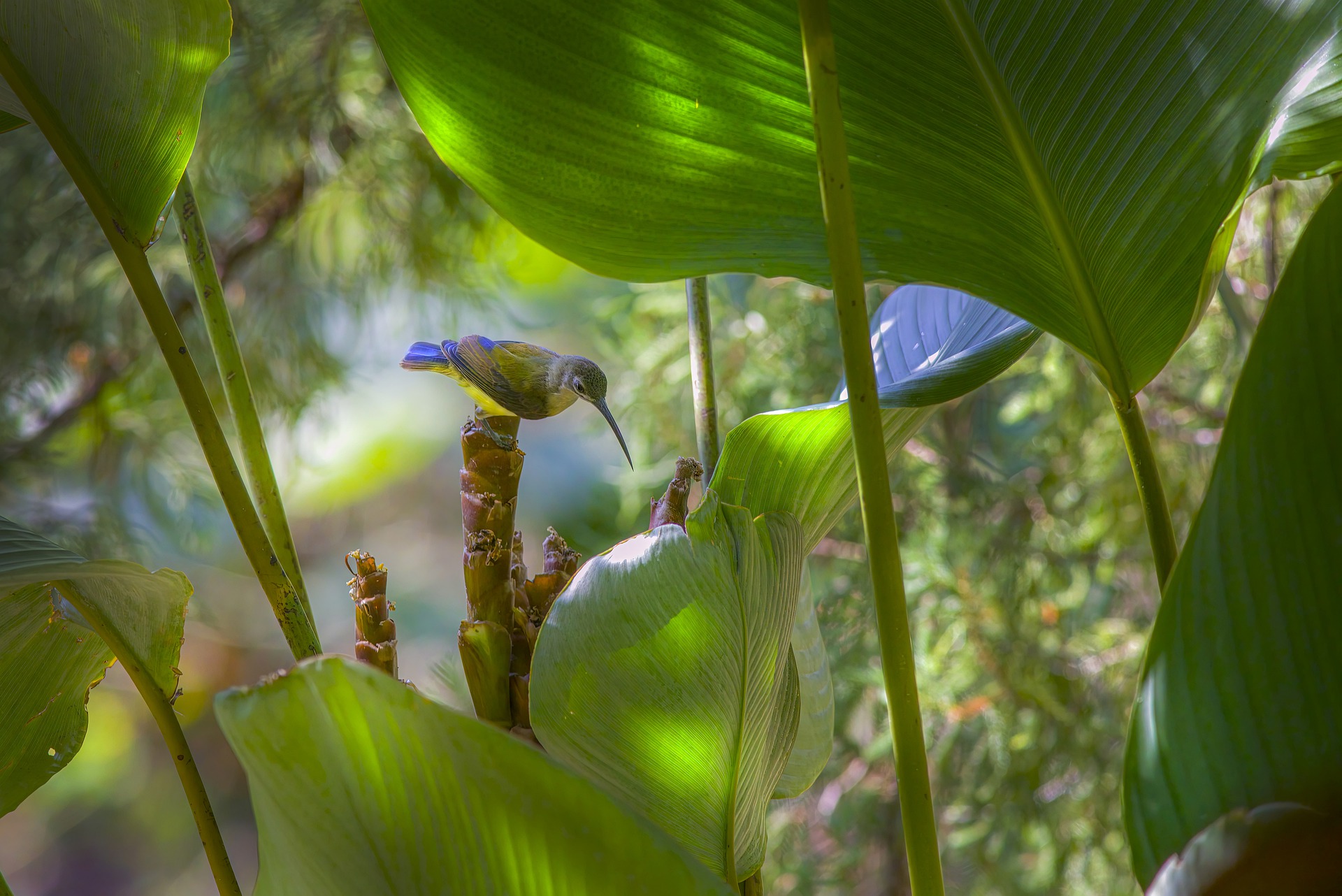The Little Spiderhunter (Arachnothera longirostra) is a small bird species belonging to the family Nectariniidae, known for its slender body and long bill. This bird is widely distributed in the tropical and subtropical forests of South and Southeast Asia. Here’s an overview of the Little Spiderhunter:
Appearance:
- Size: The Little Spiderhunter is a small bird, measuring about 12 to 15 centimeters in length.
- Coloration:
- Plumage: It has olive-green upperparts and yellowish underparts, with a paler throat and belly. The underparts may sometimes have a slight streaking.
- Bill: The bird’s most distinctive feature is its long, curved bill, which is well-adapted for feeding on nectar and catching insects.
- Eyes: The eyes are dark, providing a striking contrast with its lighter facial area.
- Tail: The tail is relatively short and dark.
Habitat:
- Preferred Habitats: The Little Spiderhunter prefers tropical and subtropical forests, including lowland forests, secondary growth, and forest edges. It can also be found in plantations and gardens.
- Geographic Range: This species is found in South Asia, including India, Sri Lanka, and the Andaman Islands, as well as in Southeast Asia, extending through Myanmar, Thailand, Malaysia, Indonesia, and the Philippines.
Behavior:
- Feeding: The Little Spiderhunter primarily feeds on nectar, using its long bill to probe flowers. It also consumes spiders and small insects, which it catches on the wing or gleans from foliage.
- Foraging: It forages actively, often hovering briefly to feed from flowers or to catch insects. It may also hang upside down to access flowers.
- Vocalizations: The bird has a variety of calls, including sharp, repetitive “chip” notes and more complex songs.
Life Cycle:
- Breeding: The breeding season varies by location but often coincides with the availability of food resources. In some regions, breeding may occur during the rainy season when food is abundant.
- Nesting: The Little Spiderhunter builds a cup-shaped nest using plant fibers, leaves, and spider webs. Nests are typically placed in low vegetation or shrubs.
- Eggs: The female lays 2 to 3 eggs, which are incubated for about 14 to 16 days.
- Chicks: The chicks are altricial (born helpless) and are fed by both parents. They fledge after about 14 to 20 days but may continue to be fed by the parents for a while longer.
Ecological Role:
- Pollination: By feeding on nectar, the Little Spiderhunter plays an important role in pollinating various plant species, contributing to the health and reproduction of tropical and subtropical forests.
- Pest Control: Its diet of spiders and insects helps control insect populations in its habitat.
Conservation Status:
- Population: The Little Spiderhunter is not currently considered threatened and has a stable population across most of its range. It is classified as Least Concern by the IUCN.
- Threats: Habitat destruction and fragmentation pose threats to local populations, particularly in areas where deforestation is prevalent.
Interesting Facts:
- Adaptability: The Little Spiderhunter is highly adaptable and can thrive in a variety of forested habitats, including degraded forests and plantations.
- Long Bill: Its long bill is not only ideal for nectar feeding but also allows it to extract spiders from their webs, hence the name “spiderhunter.”
- Energetic Forager: This bird is known for its energetic foraging behavior, constantly moving and exploring different flowers and foliage for food.
Identification Tips:
- Long, Curved Bill: The distinctive long, curved bill is a key identifying feature of the Little Spiderhunter.
- Olive-Green Plumage: The olive-green upperparts and yellowish underparts, combined with a paler throat, help distinguish it from other small birds.
- Active Behavior: Observing its active foraging behavior and preference for feeding on flowers can aid in identification.
In summary, the Little Spiderhunter (Arachnothera longirostra) is a small, energetic bird with a distinctive long bill and important ecological roles in pollination and pest control. Its adaptability to various habitats and its widespread distribution make it a common but fascinating species in its range.
Visited 190 times, 19 visit(s) today
Views: 310
Subscribe to the newsletter:
